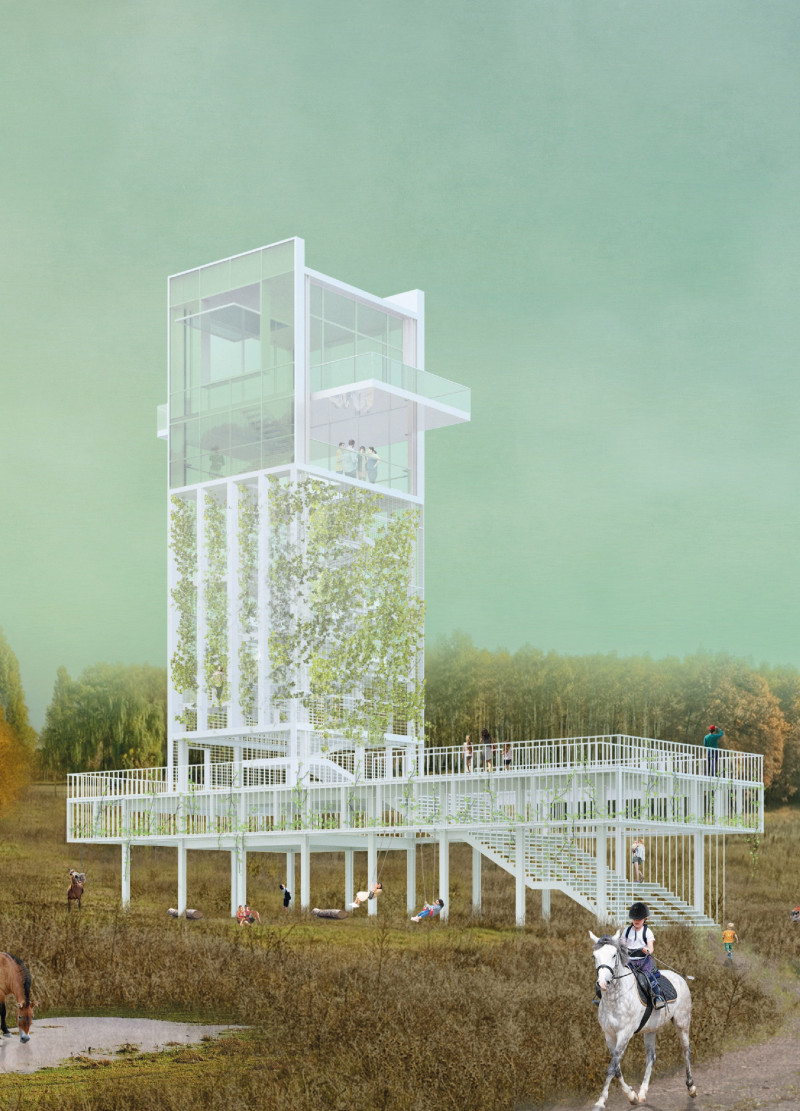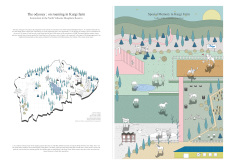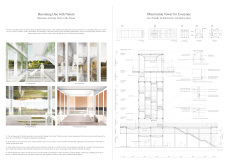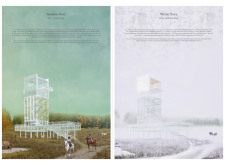5 key facts about this project
Design Functionality and User Engagement
The primary function of the observation tower is to serve as a central hub for ecotourism-oriented activities such as hiking, horse riding, and family events. The structure accommodates various spaces, including observation decks, playgrounds, and flexible gathering areas. These spaces are strategically positioned to provide diverse experiences, facilitating engagement with the natural landscape. The use of panoramic lounges and climbing pathways encourages exploration and interaction, reinforcing the relationship between visitors and the environment.
This project stands out due to its seamless blend of architectural design with ecological principles. The tower is not merely a viewpoint; it serves as an educational tool, helping visitors understand the ecosystems of the reserve through careful layout and displays. The dynamic spaces promote inclusivity, ensuring access for all visitors, thus broadening the audience that can appreciate the site.
Material Selection and Environmental Considerations
The architecture exhibits a keen focus on materiality, employing locally sourced and sustainable materials. Steel serves as the primary structural element, providing strength while maintaining a lightweight profile. Transparent glass elements enhance visibility and create a sense of openness, allowing visitors to feel connected to the surroundings without heavy barriers. Wire mesh panels further enable safety while offering unobstructed views, fostering interaction with the landscape.
Green walls play a crucial role in the project by enhancing biodiversity and improving air quality. The integration of natural materials like wood adds warmth to the structure, creating inviting spaces that resonate with the local context. The overall choice of materials reflects a commitment to minimizing environmental impact and achieving a harmonious relationship with the local ecosystem.
Innovative Design Strategies
The project employs innovative design strategies to enhance functionality and aesthetic appeal. The observation tower features multiple levels, allowing visitors to experience the landscape from various vantage points. Seasonal adaptability is a fundamental aspect of the design, ensuring year-round usability and encouraging diverse activities regardless of climatic variations.
By integrating play areas and forest trails, the overall layout promotes exploration and physical activity, appealing to families and individuals alike. The thoughtful circulation paths facilitate movement throughout the site, creating a fluid experience that encourages engagement with both the architecture and the natural environment.
For a closer examination of this architectural project, including architectural plans and detailed sections, readers are encouraged to explore the project presentation further. Understanding the architectural designs and unique ideas presented in this project reveals the potential for fostering greater appreciation of nature through innovative design approaches.


























